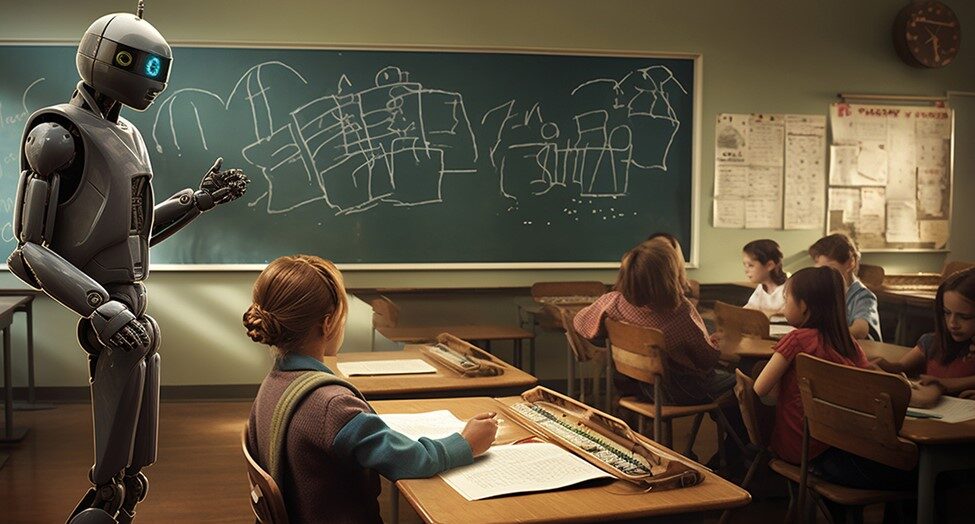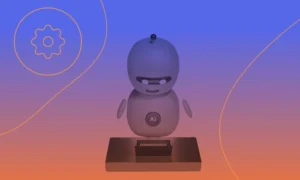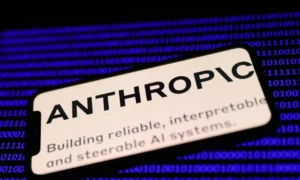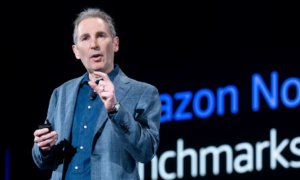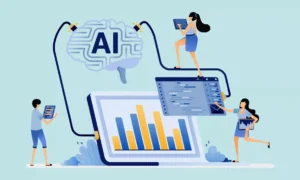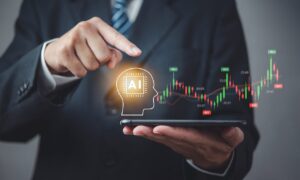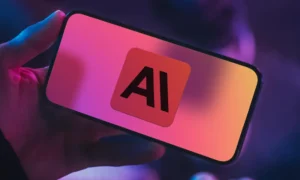AI didn’t rush into schools with fancy tools or big promises. Instead, it slowly became part of grading systems and lesson planning software. However, while some students do well with AI help, others find it hard. Furthermore, teachers have different opinions about it.
Some teachers think AI is the upgrade that classrooms really needed. On the other hand, others worry it might make students think less deeply or hurt the connection between students and teachers. Meanwhile, schools are trying to figure things out as they go, often without a clear plan.
Why AI finally got a seat in the classroom

Image Credit: GazeOn
The push for AI didn’t come from nowhere. Rather, years of overworked teachers, old teaching methods, and a big gap between what schools teach and what jobs need opened the door. Then, AI came in with numbers that were hard to ignore.
According to AIPRM, experts think the AI-in-education market will grow from $2.5 billion in 2022 to $6 billion by 2025. That’s a 43.3% compound annual growth rate. Additionally, this growth shows that schools really want it, not just marketing hype.
In the U.S., 80% of college teachers now use AI platforms every week, according to TekRevol. As a result, the time spent grading has gone down by 70% in some cases. Consequently, this lets teachers spend more time actually teaching, helping students, or learning new skills.
Here’s where it gets interesting. Students using AI-personalized programs got 28% better learning results in 42 studies across 16 countries, McKinsey found. Moreover, AIPRM says U.S. test scores went up 62% for students using adaptive tools.
This isn’t just extra help anymore. Nearly 40% of colleges have already made AI part of their main plans. Furthermore, TekRevol says 99.4% of them now think it’s necessary to stay competitive.
However, not everyone has the same access. McKinsey notes a 418% jump in AI education content between 2019 and 2023, but not all schools get the same benefits. On the good side, 73% of new tools now meet international standards, up from just 24% in 2019.
So yes, AI is here. Nevertheless, whether it helps or divides classrooms depends on what happens next.
What’s actually changing inside real classrooms
The Big Change in School Work
AI in education isn’t about replacing people. Instead, it’s about taking boring tasks away from teachers. Things like grading, taking attendance, and giving the same feedback over and over. Therefore, teachers can focus on what only they can do.
This administrative relief is transforming daily workflows. With automated systems handling routine tasks, educators report having more bandwidth for creative lesson planning and one-on-one student interaction.
Learning That Fits Each Student
For students, adaptive learning systems change content based on how well they’re doing and how fast they learn. These personalized approaches are showing consistent improvements in engagement and comprehension across diverse learning environments.
These tools aren’t just for expensive schools. The widespread adoption by educational institutions demonstrates growing confidence in AI’s practical benefits. Additionally, access is improving rapidly with better design standards and infrastructure support.
How Students Experience Learning Changes
Student interaction is changing too. AI can make long readings shorter, give feedback right away, and create study paths made just for each learner. However, there’s a cost.
“As a student, I’ve been leveraging AI tools for my academic projects, and I must say, some of them are remarkably efficient at completing tasks… However, a significant concern is the potential erosion of critical thinking abilities.” — pUkayi_m4ster, Reddit (r/education)
The good things are speed, clarity, and access. On the other hand, the risk? Students might engage with knowledge in a shallow way that looks productive but skips deep thinking.
That’s the tension now shaping classrooms — between the speed AI offers and the deep learning that education demands. This isn’t just new technology. Rather, it’s a new way of thinking about learning. And not everyone agrees where it should go.
Where AI helps in education and where it falls apart
AI’s Best Area: Big Tasks and Speed
AI works best where scale and speed matter. Grading hundreds of papers, updating lesson plans quickly, or finding students who might be struggling. This is the work that makes teachers tired. Fortunately, machines can now do it.
Nevertheless, doing things at scale comes with problems. Teachers have already started pushing back.
What Startups Say
On MJShelley writes:
“The median time to reach $1,000 in monthly recurring revenue has dropped from 9 months to just 5–6 months since the widespread adoption of AI tools… It’s like having a time machine for market validation — except everyone else has one too.”
For startups building education tools, AI makes testing and growth faster. However, with speed comes too much competition. The best tools now mix AI speed with design that focuses on humans. Those that don’t often get ignored.
Teachers Working Together
On Reddit, teachers on r/Using_AI_in_Education talk about building custom tools, sharing lesson feeds, and trading ideas. It’s collaborative, messy, and always changing.
“You can customize it however you want!… Here are the feeds our other educators have created…” — Anonymous, Reddit (r/Using_AI_in_Education)
Not everything works. Nevertheless, this spirit of trying new things is changing how tools are made.
That same spirit affects how products are launched. One Indie Hacker described a bigger shift:
“Build in Public can evolve into something more powerful than just personal marketing. It can become a social experiment where Indie Hackers unite: Multiple indie founders collaborate on open-source AI libraries, data sets, or best practices…
This openness is refreshing. However, as AI becomes easier to use, the real question becomes: are these tools solving real learning problems, or just trying to keep people engaged?
The stakes aren’t just technical. They’re educational. Furthermore, the answers will shape how AI fits in long term.
The myths we hear and the realities schools face
Common Wrong Ideas vs. Reality
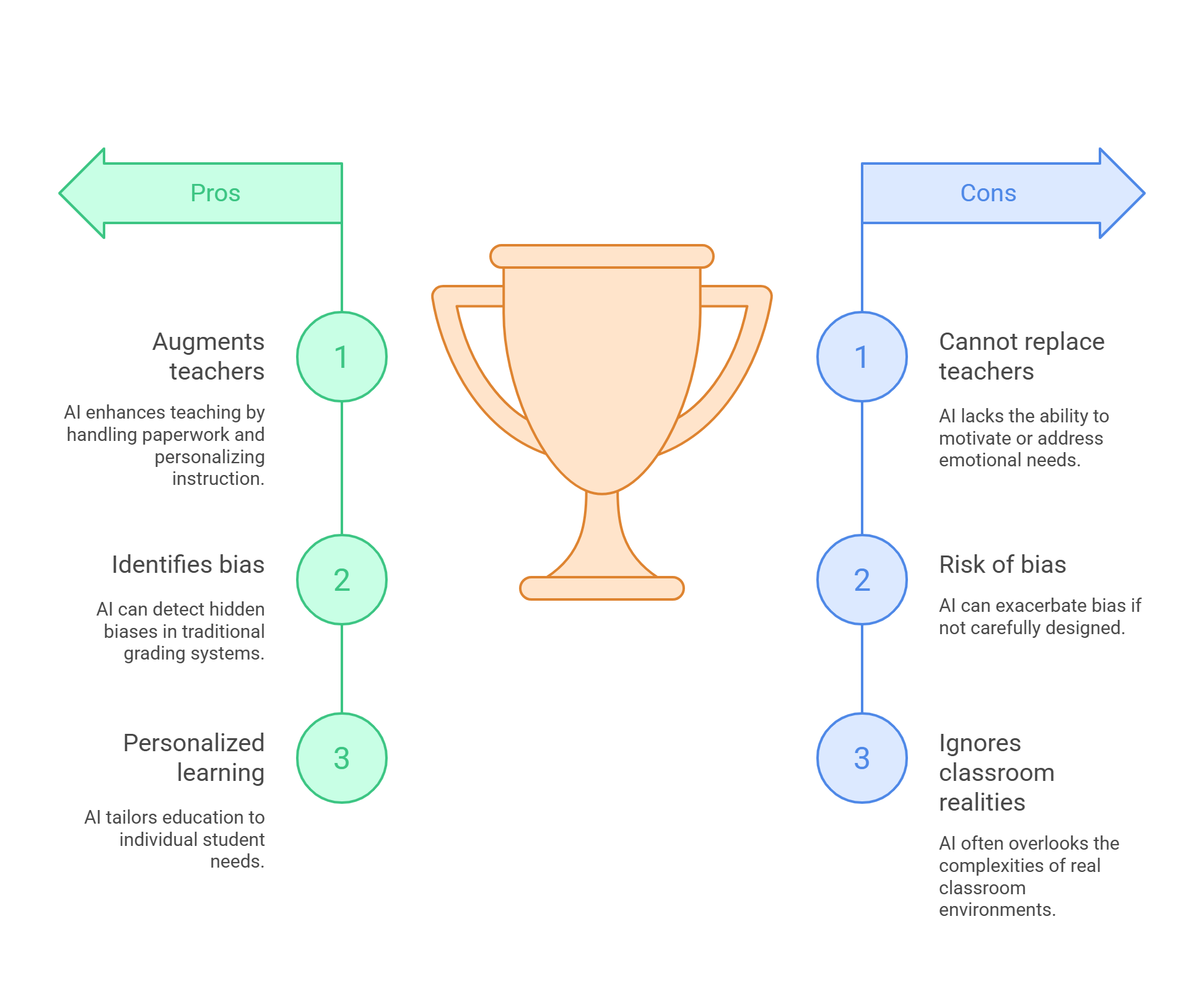
Image Credit: GazeOn
There are lots of big claims about what AI will do for education. However, many don’t hold up when you look closely, and some ignore the messy realities happening in classrooms.
Myth: AI will replace teachers.
“AI is a tool to augment teachers, not replace them.” — U.S. Department of Education, Artificial Intelligence and the Future of Teaching and Learning (2024)
AI can handle paperwork, personalize instruction, and provide support, but it can’t motivate, mentor, or handle the social and emotional needs of students. Therefore, human interaction is still necessary.
Controversy: AI increases bias in grading and access.
“While bias is a significant risk, with transparent design, inclusive datasets, and audits, AI can be more equitable than traditional systems.” — Walden University, 5 Pros and Cons of AI in Education (2024)
If not watched carefully, AI can make bias worse. However, when designed right, it can also find unfairness hidden in human-led systems. Unfortunately, most positive discussions miss this detail.
The Testing Challenge
Tension: AI boosts performance but tempts cheating.
“AI improves personalization but complicates assessment integrity. Detection tools exist but often produce false positives.” — EdTech Magazine (2024), TekRevol (2025)
Some students use AI to understand better. On the other hand, others use it to avoid doing work. As a result, schools are struggling to tell the difference.
Myth: AI tools are safe by default.
Cyberattacks and data breaches in education have surged.” — UNESCO (2025), Aristek Systems (2025)
With more AI tools collecting and storing student data, education is now a high-risk target for cyber attacks. Unfortunately, most schools aren’t ready to handle this.
The Motivation Question
Debate: AI strengthens or hurts motivation?
Some say AI helps students stay on track. Conversely, others argue it removes human responsibility and reduces real engagement. The evidence is mixed, and it’s getting more complicated every month.
Divided expert opinion: Rules are needed but hard to get right.
“The EU AI Act classifies education tools as high-risk. Oversight, transparency, and literacy are now legal expectations.” — European Association for the Education of Adults (EAEA, 2025)
Strict rules are being made, but critics worry too much regulation could stop innovation. Meanwhile, others say the rules still don’t go far enough.
These aren’t extreme arguments. Rather, they’re from teachers, researchers, and policymakers who are actively shaping AI’s role in education. Furthermore, these disagreements aren’t going away — they’re part of the new normal.
Who is shaping AI rules in education and what they are missing
Regional Policy Responses
AI’s rapid adoption in classrooms has sparked a wave of regional policy moves. However, there’s no single global playbook yet. Countries are writing their own rules, and the gaps are starting to show.
In Europe, the EU AI Act categorizes educational AI systems as “high-risk.” That means strict oversight. Human-in-the-loop governance, bias-resistant datasets, and mandatory transparency. Therefore, schools and vendors alike are now legally expected to meet these standards or face penalties.
Innovative Frameworks
Austria’s HEAT-AI framework, built by St. Pölten University, adds a higher education twist. It lets institutions adapt EU guidelines to their own risks, protecting academic integrity while allowing for innovation. That flexibility is rare. Moreover, it’s drawing global attention.
Meanwhile, UNESCO is pushing a global ethics-first agenda. Its 2025 Digital Learning Week focused on human-centered AI, equitable access, and closing the digital divide. The emphasis? AI shouldn’t just be efficient. It must also be fair.
State-Level Initiatives
Even U.S. states are stepping in. As of mid-2025, 25 states have released AI guidelines for schools. These include rules against using AI to grade subjective work, mandates for citation of AI-generated content, and new governance boards inside districts.
The tension is clear: regulate too little, and risk harm. Regulate too much, and innovation stalls. However, one thing’s certain. The era of ungoverned AI in classrooms is ending.
And what replaces it will define not just how we teach, but what kind of digital citizens we raise.
Adaptive Learning Explained Simply
Understanding True Personalization
With so many AI tools claiming to be “personalized,” the term can start to lose meaning. However, adaptive learning isn’t just a buzzword. Rather, it’s a specific approach that reacts to each student’s inputs in real time.
Here’s how it works: As students interact with digital learning environments, the AI tracks their progress. What they get right, what they struggle with, how long they spend on each concept. Based on that, it reshapes the path forward. It may skip concepts the student has mastered, or revisit ones where confidence is shaky.
Measurable Impact
This isn’t just useful. It’s measurable. The evidence from global research shows consistent improvements in learning outcomes when AI personalizes instruction. Furthermore, these systems are proving particularly effective at identifying and addressing individual learning gaps.
The point isn’t to “gamify” or oversimplify learning. Instead, the best adaptive systems focus on depth, not just progression. They give students what traditional models often can’t. A pace and path that match their cognitive style, emotional bandwidth, and prior knowledge.
That’s why adaptive learning continues to show up in policy reports, startup pitches, and institutional dashboards. It’s not a feature anymore. Rather, it’s becoming an expectation.
What is still getting in the way of better AI in schools

Image Credit: GazeOn
Infrastructure and Access Barriers
For all the progress, AI in education still faces real hurdles. And not just technical ones. Cultural, ethical, and infrastructural challenges are slowing the pace of meaningful adoption.
Uneven access and funding
The explosive growth in AI education tools hasn’t reached all schools equally. Many under-resourced schools lack the infrastructure to deploy them. Broadband gaps, outdated hardware, and training deficits create uneven benefits. Consequently, this deepens the very inequities AI is supposed to solve.
Human Factors
Teacher resistance and training gaps
Some teachers remain skeptical, not because they fear replacement, but because they haven’t been shown how these tools align with their teaching methods. While higher education has embraced AI tools widely, K-12 adoption remains limited. Often due to lack of onboarding and contextual fit.
Technical Limitations
Assessment challenges
Personalized learning makes standardized testing feel increasingly blunt. However, alternatives are still maturing. According to EdTech Magazine, AI-powered assessments can misread nuance or overcorrect for patterns that aren’t pedagogically meaningful.
Security and Ethics
Privacy and security risks
As UNESCO and Aristek Systems warn, education is becoming a prime target for cyberattacks due to the sensitive data AI tools process. Unfortunately, most institutions aren’t equipped to audit these systems or respond when something goes wrong.
Ethical dilemmas at scale
From algorithmic bias to over-monitoring students, ethical concerns now move from fringe discourse to frontline debates. Walden University’s 2024 review made clear that ethical deployment depends not just on the tech. But on who builds it, how it’s trained, and who gets to opt out.
These aren’t bugs to fix. Rather, they’re structural barriers that need systemic strategy. Without thoughtful implementation, AI risks amplifying the very problems it promises to fix.
Still, the momentum is real. Furthermore, with the right governance, inclusion, and feedback loops, the next phase could be not just transformative, but more equitable.
What’s next for AI in education and why it matters
The Current Reality
AI’s role in education is no longer theoretical. It’s live. However, the future it shapes depends entirely on how decisions are made today. By institutions, regulators, and technologists who still hold the steering wheel.
Three themes are emerging across research and policy briefings:
AI literacy is becoming foundational
UNESCO and the U.S. Department of Education both stress the importance of AI literacy. Not just for students, but for educators and administrators too. Knowing how systems work, what biases they carry, and where they fail will be essential for future-ready learning environments.
Human-AI collaboration will define success
Research consistently shows that AI is most effective when it augments rather than replaces. Hybrid models work best. Where AI handles backend tasks and teachers lead emotionally intelligent instruction. These are shaping up as the most sustainable path.
Equity, ethics, and governance will be deal-breakers
From the EU AI Act to HEAT-AI and UNESCO’s global frameworks, the message is clear: deployment without fairness is failure. Institutions are being judged not just on how fast they adopt AI, but how responsibly they do it.
AI won’t pause. However, the people shaping it can choose to slow down, think harder, and build better. If AI is going to be embedded in every layer of learning, it has to serve all learners. Not just the well-connected, well-funded few.
The next chapter of AI in education won’t be written by tools. Rather, it’ll be written by the people who decide what those tools are allowed to do. And who they’re built for.
Frequently Asked Questions (FAQs)
What is AI in education?
AI in education refers to the use of artificial intelligence technologies like machine learning, natural language processing, and data analytics to automate, personalize, or enhance educational experiences. This includes everything from automated grading and adaptive learning systems to virtual tutors and predictive analytics.
How does AI personalize learning?
Adaptive learning platforms use AI to adjust content based on each student’s performance, pace, and engagement. These systems can skip mastered topics, review weaker areas, and recommend targeted resources, making learning more responsive and student-specific.
Is AI replacing teachers?
No. AI serves as a tool to augment educators rather than replace them. Teachers remain crucial for emotional intelligence, classroom dynamics, mentorship, and ethics—roles that require human connection and judgment.
What are the risks of using AI in education?
Risks include bias in algorithms, student data privacy breaches, overreliance on automation, and ethical dilemmas such as surveillance or misinterpretation of student behavior. UNESCO and Walden University both stress the importance of inclusive design and strong governance.
Is AI used more in higher education or K-12?
AI adoption is significantly higher in higher education, with widespread weekly usage among college instructors. However, K-12 usage remains lower due to infrastructure gaps and lack of teacher training.
Can AI improve test scores?
Yes. Research shows significant improvements in learning outcomes when AI personalizes instruction. Adaptive learning systems have demonstrated measurable increases in student performance across various educational contexts.
What laws regulate AI in education?
The EU AI Act classifies educational AI tools as high-risk, requiring transparency, bias audits, and human oversight. In the U.S., 25 states have introduced local AI education policies. Meanwhile, Austria’s HEAT-AI offers a flexible model for higher education.
Is AI accessible to all students?
Progress has been made with improved accessibility standards in recent years. However, access gaps persist due to infrastructure disparities across schools and regions.
Final thoughts on what this moment means for education
AI didn’t quietly enter education. Rather, it’s embedded itself in the systems, platforms, and policies shaping how students learn and how teachers lead. From adaptive tools and automated feedback to deep regulatory shifts like the EU AI Act and UNESCO’s ethical frameworks, the future isn’t waiting. It’s already writing itself into every layer of learning.
However, as this technology evolves, so must our expectations. The real story isn’t just about speed, scale, or personalization. Instead, it’s about trust. It’s about whether these systems will deepen learning or simply accelerate test prep. Whether teachers will be empowered or sidelined. Whether students will gain agency or become passive users.
We’re at an inflection point. One where human judgment, inclusive design, and policy guardrails will shape not just outcomes, but values.
If education is to remain a human endeavor, then AI’s role must stay grounded in humanity. Not just smart. Not just fast. But fair, transparent, and purpose-built for every learner. Not just the most connected or well-resourced.
That future is still being written. Furthermore, the pen, for now, is in our hands.
Note: This article was fact-checked and reviewed according to GazeOn’s editorial standards for fairness, transparency, and evidence.

